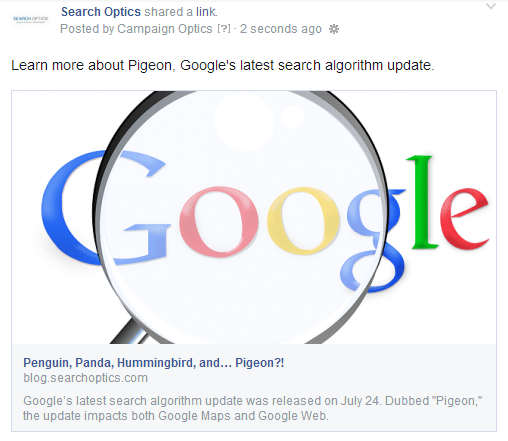Facebook Cracks Down on “Click-Baiting”; Promotes Native-Link Format
Odds are you already know what “click-baiting” is even if you haven’t heard of the term. Have you ever read a caption like “This ONE little trick will help you lose 10 lbs.” or “This guy HUGS a lion! You will not believe what happens next.”? These headlines are usually followed by a link to a site whose goal is not to provide useful content, but to simply rack up page views.
On Facebook, these posts generate more clicks and are consequently ranked higher in a user’s News Feed. This held true until the company announced it would be cracking down on the practice by “taking into account whether people tend to spend time away from Facebook after clicking a link, or whether they tend to come straight back to News Feed when we rank stories with links in them.” The social network is implementing these changes to ensure that content is not spammy but actually useful.
What, then, constitutes a quality Facebook post? Here is an example:
As you can see, a URL has been pasted into the status bar, from which Facebook’s API scrapes the information and fills in a photo, title, and description from the site. Facebook calls this “link format” or “native link sharing.” Alternatively, a user can manually upload a photo, providing his or her own caption and link, but Facebook is now giving more weight to posts that are created using its link format.
Despite this knowledge, many businesses still share links by including a URL in the caption, thereby ignoring the SEO benefits that the Facebook link format provides. If the post performs well organically, it can have a very positive effect on your SEO rankings, the post looks clean and polished, and it offers additional information about the article, making it easier for the user to decide if he or she wants to click through. This format also makes it easier for mobile users to click through on a small screen. It is clear to see that content for Facebook should be optimized, otherwise you may be investing a lot of time creating posts and getting very little return on that investment.
With the knowledge we now possess about “click-baiting” and how to effectively create a post, there is no longer any reason to provide a link in a caption. Such posts could potentially be marked by Facebook as “click-bait” and will not perform as well in your users’ News Feeds.
The post Facebook Cracks Down on “Click-Baiting”; Promotes Native-Link Format appeared first on Search Optics Blog.

